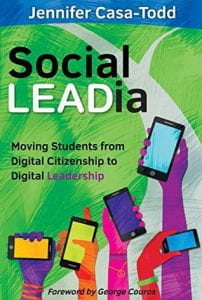A powerful comment on a blog post, Flipgrid video, or tweet adds to the conversation. This could include posing questions to the creator or other commenters, adding opposing viewpoints, or providing alternate perspectives on the content.
If I were teaching my students how to comment on social media posts, we would first have a discussion about empathy and tact. I would remind my students that they don’t have to agree with what they see online, but they can disagree without insulting the original poster or other commenters.
Criteria for comments would include a phrase to show understanding of the content in the post about which they are commenting. For example, comments could begin with phrases such as “You said in your post…” “I agree with you about…” etc. By encouraging this summary, students have to take the time to think and process what was in the original post, which would, hopefully, lead to a more positive comment. Criteria would also include posing a question, something they are wondering about, or alternate perspective that would keep the conversation moving forward. Comments would also need to be positively phrased, and not hurtful.
In order to be leaders through comments on social media, students need to first have enough knowledge about the topic being discussed. Through research and classroom lessons, students can gain perspectives and hopefully see multiple sides to the issues being discussed online. Having empathy for the original poster will help students comment positively.
Before discussing commenting with my students, I think it would be necessary to have a conversation about abusive commenting and trolls. Through that discussion, I would remind my students that it is easier to leave rude or abusive comments online than it is to say these things to somebody in person. We’d have a conversation about why people feel more emboldened to be mean online, and talk about the fact that behind every screen name is a human who has feelings. Without empathy, students can’t be leaders online.



